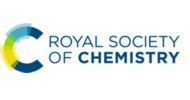 Dr. Xin Yang is now a professor at the School of Environmental Science and Engineering at Sun Yat-sen University. She received a B.S. in Environmental Science from Nankai University in 2002 and obtained her M.Phil. and Ph.D. degree in Environmental Engineering from the Hong Kong University of Science & Technology at 2004 and 2007, respectively. She was a postdoctoral fellow, working with Prof. Philip C. Singer at University of North Carolina at Chapel Hill. Her research focuses on the formation mechanisms and control strategies of disinfection byproducts in water treatment and the fate of emerging micropollutants in aqueous environments.
Dr. Xin Yang is now a professor at the School of Environmental Science and Engineering at Sun Yat-sen University. She received a B.S. in Environmental Science from Nankai University in 2002 and obtained her M.Phil. and Ph.D. degree in Environmental Engineering from the Hong Kong University of Science & Technology at 2004 and 2007, respectively. She was a postdoctoral fellow, working with Prof. Philip C. Singer at University of North Carolina at Chapel Hill. Her research focuses on the formation mechanisms and control strategies of disinfection byproducts in water treatment and the fate of emerging micropollutants in aqueous environments.
– How has your research evolved from your first to your most recent article?
My first research article was on disinfection byproducts formation during chlorination during my MPhi study at the HKUST. My current paper is also on disinfection byproducts, but from chlorine dioxide disinfection. Over the years, my research has been focused on disinfection and the byproducts formation with expansion toward emerging contaminants, such as pharmaceuticals and personal care products and persistent organic pollutants. My research has always aimed at drinking water safety.
– What aspect of your work are you most excited about at the moment?
The most exciting thing is to bridge the knowledge or results from the laboratory work with the real application. As my research has been focusing on drinking water treatment, we have good connections with water companies serving drinking water. It is great to apply what have learned from the laboratory work to guide the real application in water treatment. This is not easy, but we are trying.
– What would be the ideal ratio of chlorine dioxide:chlorine for water treatment?
From the tests, we find that the presence of some chlorine in chlorine dioxide solution may be effective in control certain groups of disinfection byproducts. It is difficult to give an ideal ratio as the water qualities vary. Meanwhile, the valuation of the formation of disinfection byproducts is just one aspect of the mixing solution, the other aspects such as inactivation capability may also be considered for further study.
– What do you find most challenging about your research?
I am working on pollutants or products with trace concentrations and the instruments such as GC-MS/MS and LC-MS/MS are often used. As the exploration of the reaction pathway is often one major objective, the mass spectral analysis from tons of peaks obtained from MS is very challenging.
– In which upcoming conference or events may our readers meet you?
I will be attending the Gordon Conference on Drinking Water Disinfection By-Products in July 2017 in South Hadley, MA, USA. The other conferences I often attend are the International Water Association conferences.
– How do you spend your spare time?
I spend my spare time with my family including my 6-year old son. Outside of that, I enjoy reading, travelling and playing tennis.
– Which profession would you choose if you were not a scientist?
I have been enjoying so much as a teacher and researcher in the university. If I had not gone into science, I would like to be an engineer.
– Can you share one piece of career-related advice or wisdom with other early career scientists?
Work on something that needs to be worked on. Research is not just paper publication. It will be very exciting and important to solve real-application problems.










